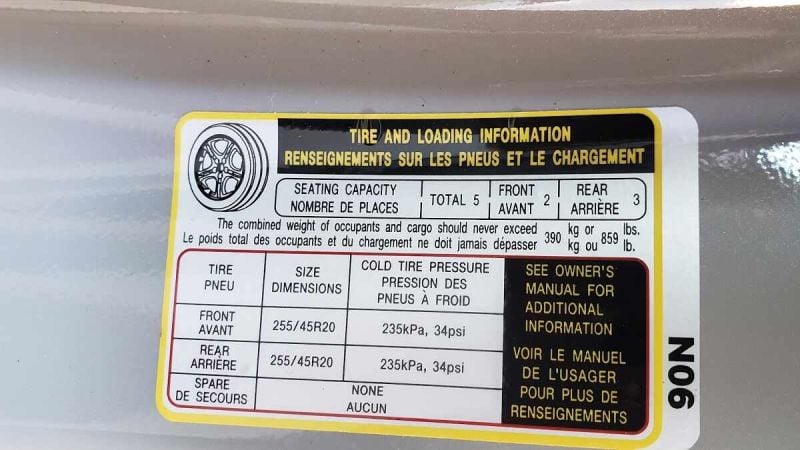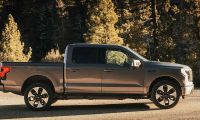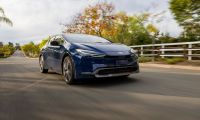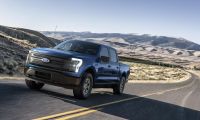Your electric vehicle is going to be facing some physics headwinds in winter. The battery is not going to store as much energy. The battery will not want to accept energy when charging as rapidly. The charging cable is going to be stiff and reluctant to uncoil if you charge at home outdoors. The heating system will sap your range. With all of these challenges, don't burden your EV with improperly inflated tires.
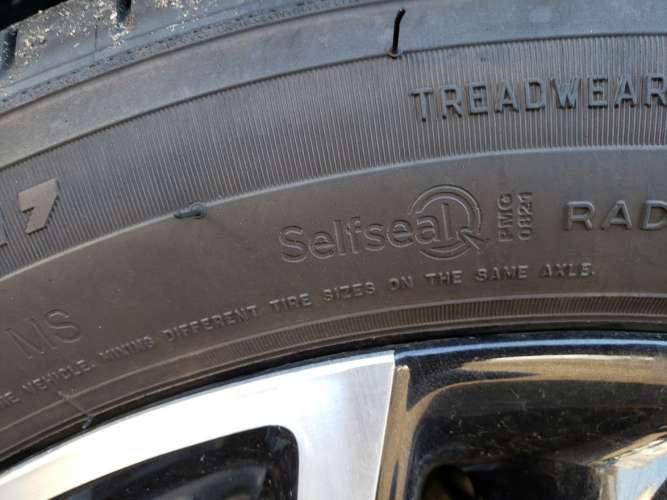
Most EVs use special tires. They are often rated for Extra Load. Some have acoustic foam liners. Others have self-sealing technology that can help if you suffer a puncture. Almost all EV tires are much more expensive to purchase than tires for a similarly-sized conventional vehicle.
Properly inflating your tires will help them to live their longest life. Tires that are inflated to a pressure other than what the manufacturer has tested and proven to be the right pressure will either over-wear their center section, or their sidewalls. To get even wear across the tread pattern, and thus maximize the treadlife, you need to follow the manuafaturer's suggested pressure setting.
Tires with too little air also are at risk for damage from potholes and road imperfections. That is reason enough to inflate your EV’s tires properly, but there is an even more pressing reason to do so - range.
Electric vehicles with tires that are set below the manufacturer’s recommended pounds per square inch (kPa or whatever force per square unit of area you favor) will sap your car’s range at a time when you are going to indeed every mile possible.
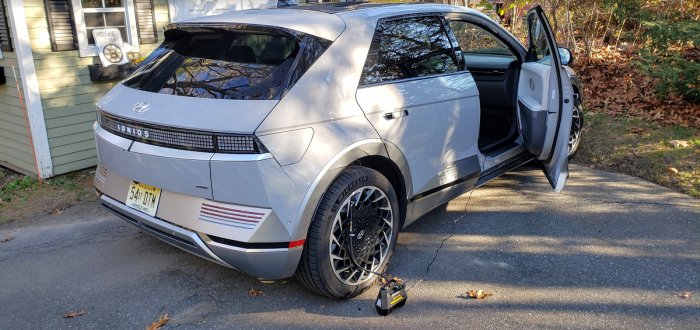
How To Set Your EV’s Tire Pressure
The setpoint for any vehicle’s tire pressures is located on the driver’s-side door jam. You will probably need your reading glasses and have to turn your head sideways to read it, but it’s right there in black and white (and yellow). Note that the front and rear tires may not have the same pressure setpoint.
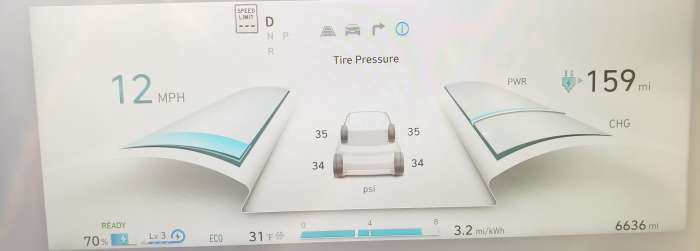
These pressure settings are for when the car is cold. That means not driven. As you drive, the tire pressure will increase by up to a few psi. That’s normal and due to road friction. Also, don't sweat it if one of your tires has a 1 or 2 psi difference from the others. The sensors are not that specific, and you may not be able to get them all to the same exact number.
Tire pressure drops as temperatures get colder. As the temp drops by 10 F, the pressure will decline by roughly one psi. So if you see your pressure in fall when it is 80 F, when winter comes and it is 20F, the pressure will be six pounds lower. And this lowering of all the tires will usually not set off your Tire Pressure Monitoring System (TPMS).
By keeping your tires at their proper setpoint, you will ensure that you prolong both your tires’ lives and the driving range of your EV.
Images by John Goreham.
John Goreham is a long-time New England Motor Press Association member and recovering engineer. John's interest in EVs goes back to 1990 when he designed the thermal control system for an EV battery as part of an academic team. After earning his mechanical engineering degree, John completed a marketing program at Northeastern University and worked with automotive component manufacturers, in the semiconductor industry, and in biotech. In addition to Torque News, John's work has appeared in print in dozens of American news outlets and he provides reviews to many vehicle shopping sites. You can follow John on TikTok @ToknCars, on Twitter, and view his credentials at Linkedin



